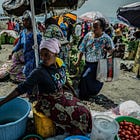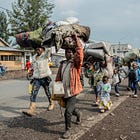Seizing is easy, ruling is harder
Months after seizing Goma, M23 is still struggling to control it. The city remains unstable due to widespread small arms and thousands of escaped inmates from Munzenze Prison
Ajabu Adolphe in Goma

Four months after seizing Goma, the M23 coalition is still struggling to take control of this city of nearly two million people. The city is awash with small arms and the thousands of former prisoners who escaped from Munzenze Prison in the chaos of Goma’s fall to M23.
The result is a tenuous calm that is frequently interrupted by robberies, burglaries and raids by violent criminals. In the words of one Goma resident, Prisca Kanyere, living in the city is like a subscription that is “renewable every 24 hours” because “to sleep and wake up alive is a very exceptional grace in these times”.
M23 military spokesperson Willy Ngoma acknowledges the insecurity but blames Kinshasa, claiming that the small arms flooding Goma were distributed or abandoned by the Congolese national army as they left their posts in January.
Ngoma told The Continent that M23 had organised cordon-and-search operations in several parts of Goma this week, and seized dozens of weapons and arrested several suspected criminals.
The closure of the airport is another headache for the residents of Goma. The last flights out of Goma International Airport were on 26 January, as M23 marched into the town. The airport’s control tower, tarmac and other infrastructure were destroyed in the fighting, rendering it inoperable.
Goma residents are now forced to travel to neighbouring countries for flights – including what would be domestic DRC travel – incurring additional costs and complicated logistics.
“I had to take an Ethiopian Airlines f light from Kigali to Addis before getting to Kinshasa. I paid for the hotel in Kigali for two days. It was a long journey,” said James Ushindi, a Goma resident. Before January, he would have flown directly from Goma to Kinshasa.



